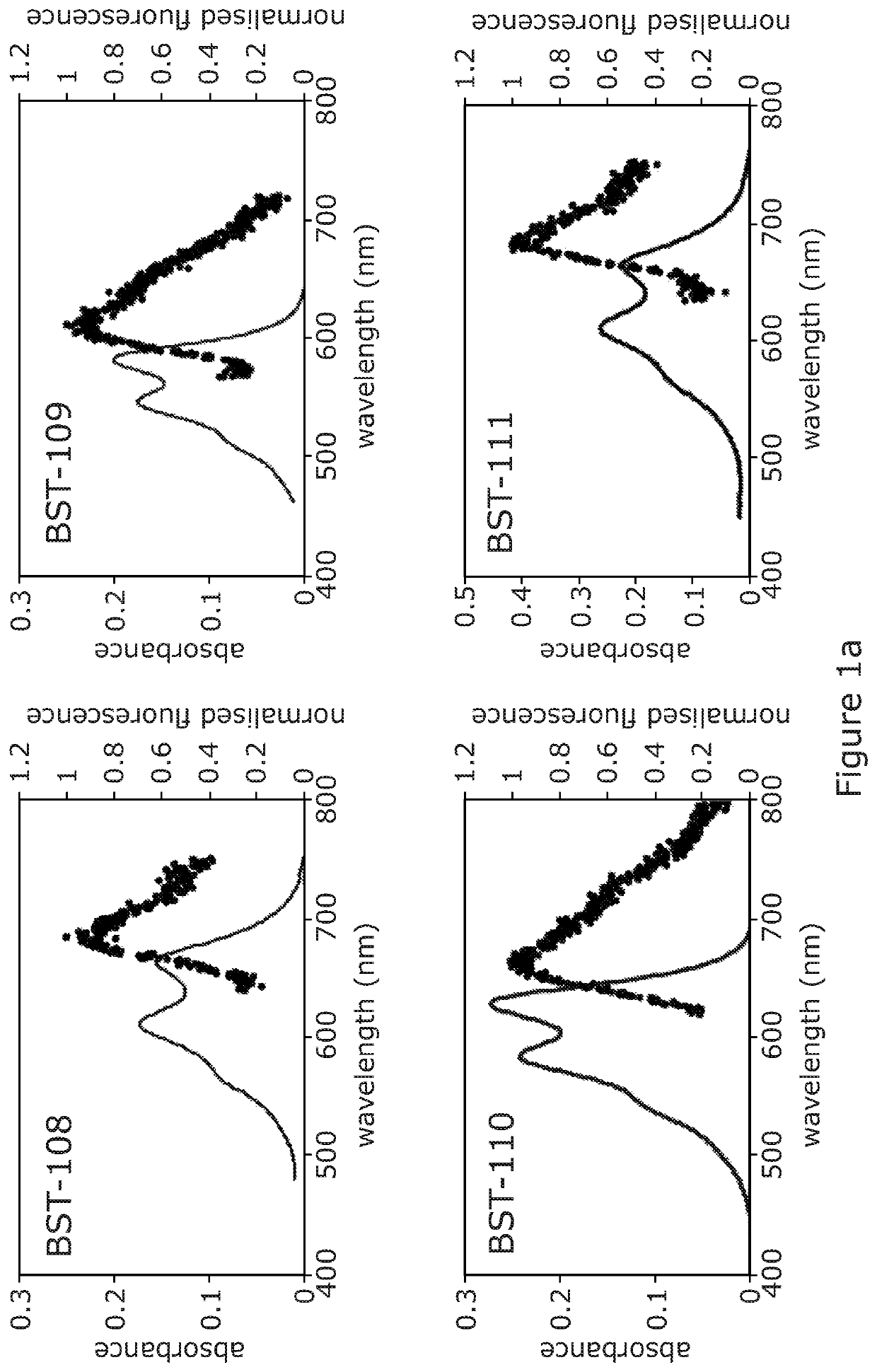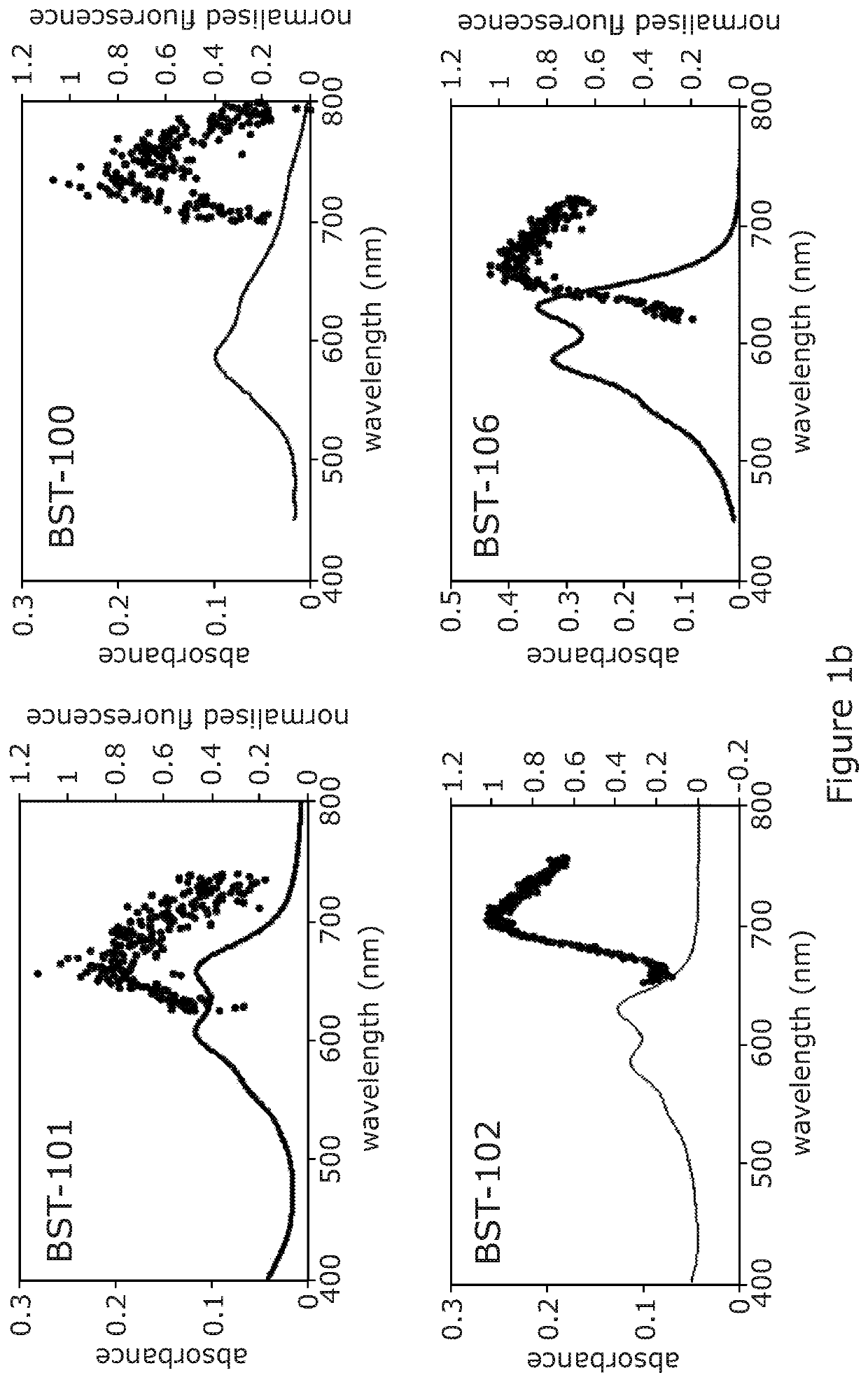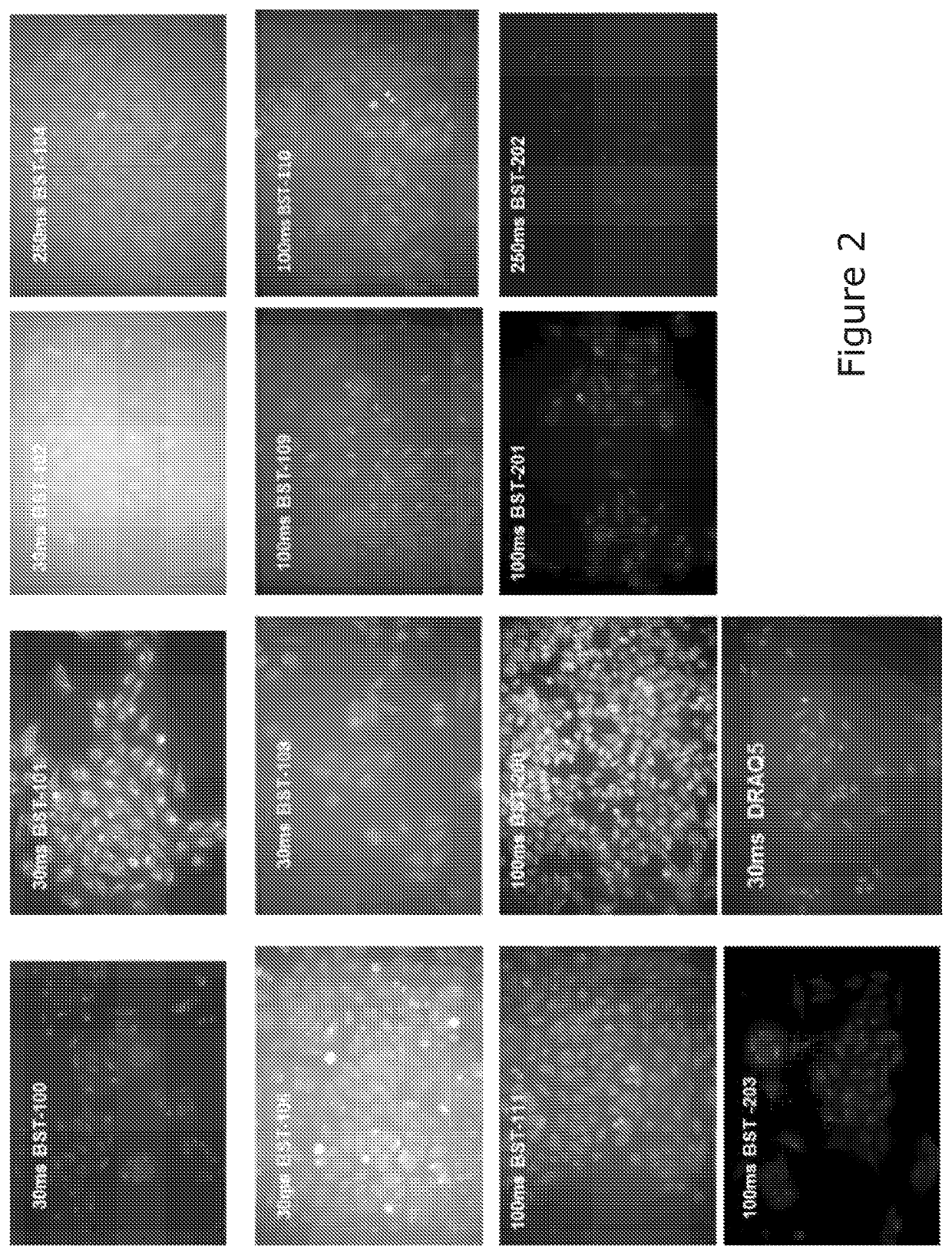Acetalanthraquinone derivatives useful for cellular staining
a technology of acetalanthraquinone and derivatives, applied in the field of acetalanthraquinonebased compounds capable of cellular staining, can solve the problem that low signal-to-noise normally limits conventional raman spectroscopy applications
- Summary
- Abstract
- Description
- Claims
- Application Information
AI Technical Summary
Benefits of technology
Problems solved by technology
Method used
Image
Examples
example 1
of Symmetrical 1,4-Di-Substituted-Anthraquinones (Formula (I))
[0156]The following specific compounds were synthesized:
example 1a
1,4-Bis(5,5-dimethoxypentylamino)anthracene-9,10-dione (BST-101)
[0157]
[0158]To a stirred solution of 1,4-difluoro-anthraquinone (74 mg, 0.29 mmol) in pyridine (1 mL) was added 5,5-dimethoxypentanamine (261 mg, 1.72 mmol) and the resulting solution was stirred at 70° C. for 3 h. The solvent was evaporated under reduced pressure and the reaction mixture was purified by flash chromatography using gradient eluent (EtOAc:PE, 0:100→3:7) to yield the title compound as a dark blue powder (62 mg, 44%). δH (CDCl3, 400 MHz) 8.24 (2H, dd, J 3.5, 6.0 Hz), 7.6 (2H, dd, J 3.5, 6.0 Hz), 7.14 (2H, s), 4.32 (2H, t, J 5.6), 3.62 (4H, t, J 6.5 Hz), 3.36 (4H, t, J 5.5 Hz), 3.25 (12H, s, O(CH3)2), 1.75-1.45 (12H, m); δC (CDCl3, 100 MHz) 181.3, 145, 133.5, 130.7, 125.3, 122.1, 108.7, 103.4, 51.7, 41.2, 30.8, 28.5, 21.1; m / z (ES+) 499 (M+H, 100).
example 1b
3,3′-(9,10-Dioxo-9,10-dihydroanthracene-1,4-diyl)bis(azanediyl)bis(N-(2,2-dimethoxyethyl)propanamide) (BST-102)
[0159]
[0160]To a stirred solution of 1,4-difluoro-anthraquinone (80 mg, 0.33 mmol) in pyridine (1 mL) was added 3-amino-N-(2,2-dimethoxyethyl)propanamide (345.7 mg, 1.96 mmol) and the resulting solution was stirred at 70° C. for 4 h. The solvent was evaporated under reduced pressure and the reaction mixture was purified by flash chromatography using gradient eluent (CH3OH:CH2Cl2, 1:99→4:9 to yield the title compound as a dark blue powder (107 mg, 59%). δH (CDCl3, 400 MHz) 8.15 (2H, dd J 3.5, 6.0 Hz), 7.6 (2H, dd J 3.5, 6.0 Hz), 7.12 (2H, s), 4.32 (2H, t, J 5.6 Hz), 3.61 (4H, t, J 6.5 Hz), 3.37 (4H, t, J 5.6 Hz), 3.28 (12H, s, O(CH3)2), 2.53 (4H, t, J 6.5 Hz); δC (CDCl3, 100 MHz) 182.2, 170.8, 145.6, 134.2, 132.1, 126.0, 123.3, 110.3, 102.8, 54.2, 41.2, 36.5, 39.1; m / z (ES+) 557 (M+H, 100).
PUM
| Property | Measurement | Unit |
|---|---|---|
| excitation wavelengths | aaaaa | aaaaa |
| peak excitation wavelengths | aaaaa | aaaaa |
| excitation wavelengths | aaaaa | aaaaa |
Abstract
Description
Claims
Application Information
 Login to View More
Login to View More - R&D
- Intellectual Property
- Life Sciences
- Materials
- Tech Scout
- Unparalleled Data Quality
- Higher Quality Content
- 60% Fewer Hallucinations
Browse by: Latest US Patents, China's latest patents, Technical Efficacy Thesaurus, Application Domain, Technology Topic, Popular Technical Reports.
© 2025 PatSnap. All rights reserved.Legal|Privacy policy|Modern Slavery Act Transparency Statement|Sitemap|About US| Contact US: help@patsnap.com



